

Chapter 2
Solutions to Study Questions
2-1. The “Regardless of Your Major” box describes two types of retirement plans: defined contribution and defined benefit. The “defined” part of each name means that benefits are specified, or defined; the difference between the two plans is in when those benefits are defined. Defined benefit (DB) plans specify the amounts to be paid in retirement that is, the benefits the retiree will receive are specified. Thus, the sponsor of the plan promises to make specific payments to the retiree, and then the sponsor accepts the responsibility for investing a pool of assets now (or at least, before the covered person retires) to ensure that those benefits in fact can be paid in the future. Managing pension assets to ensure future payments is complicated, and companies these days prefer to offer defined contribution plans, like 401(k) plans, instead of defined benefit plans. Defined contribution (DC) plans specify the contributions that will be made to the plan (now), not the benefits that will be paid at retirement. It’s a lot easier to specify an amount to be paid today than it is to ensure that one will be made in the future. With defined contribution plans, employees accept the responsibility of investing their funds to ensure adequate resources in retirement, removing that burden from employers. It’s therefore not surprising that employers prefer defined contribution plans, while employees who have defined benefit plans count themselves lucky.
2-2. The three players who interact in the financial markets are borrowers, savers, and financial intermediaries.
Borrowers need money to help finance some specific purpose a student loan to help pay for college, an auto loan for a car, or a mortgage for a house Savers have money that they don’t need for consumption today, so they set this money aside to use in the future. Financial intermediaries bring the two together, channeling the savers’ “extra” money to the borrowers for their immediate use If the borrowers and savers could get together themselves somehow, they could “cut out the middleman” and save the intermediation costs. This might sound good but is it feasible? Financial intermediaries specialize in evaluating the creditworthiness of borrowers, so they help ensure that savers’ money is channeled to borrowers who will repay They also allow efficient aggregation of small amounts of individual savings into blocks of loanable funds large enough to be useful to borrowers.
2-3. As outlined in Section 2.2 of the text, a financial intermediary is a firm that collects money from savers, bundles it into attractive sizes with attractive terms, and lends it to borrowers. The principal types of financial intermediaries in the United States are:
COMMERCIAL BANKS
Commercial banks are depository institutions that take deposits (such as checking or savings deposits) and make loans (such as mortgage loans or auto loans). Commercial banks are also integral parts of our national payment system. Their importance to the functioning of our economy has led to their being heavily regulated and subject to extensive oversight (for example, by the FDIC, which insures their deposits, and by the Fed, which mandates their reserve requirements).
NONBANK FINANCIAL INTERMEDIARIES
While these businesses channel money from those who have it to those who need it, they do not both take deposits and make loans, as a depository institution does.
Financial services corporations: Financial services corporations, like GE Capital, provide loans and credit to businesses and individuals (including credit card services). Some of these companies are charged with ensuring financing for the expensive products of large manufacturing companies (for example, Ford Motor Credit). These institutions do not take deposits, so they are missing one of the two elements of a depository institution’s job description.
Insurance companies: Insurance companies insure individuals and businesses against certain types of risks (for example, the risk that your automobile will be damaged in a collision, and/or cause damage or injury to someone else; the risk that your house will burn down; the risk that you will die unexpectedly, leaving your heirs without their major breadwinner). Insurance companies are major players in the financial markets, because they must invest the
premiums they collect until the money is needed to pay claims. The type of insurance a firm provides tends to determine the type of market in which they invest most frequently. For example, life insurers often have decades between premium collection and claim payments, so they are large players in the capital markets. On the other hand, property and casualty companies (like auto and home insurers) must stay closer to their money, since their claims may come much sooner; they are larger players in the money markets.
Investment banks: Investment banks like Goldman Sachs and Morgan Stanley advise firms about their financing needs and act as intermediaries when the firms float new securities. For example, an investment banker may advise a client about the most favorable terms for a new bond issue (e g., covenants, term, options, coupon), then underwrite the issuance of the bonds (buying the bonds from the issuer, then selling them to investors, taking inventory risk in return for a spread)
INVESTMENT COMPANIES
These companies take savings and invest them in other companies’ securities. As the text puts it, they are “financial institutions that pool the savings of individual savers and invest the money, purely for investment purposes, in the securities issued by other companies.” Perhaps the most familiar type of investment company is the mutual fund.
Mutual funds: Mutual funds collect money from investors, then invest that money into specific types of financial assets. Each mutual fund has a prospectus that describes the particular type of assets that the fund may buy: for example, the fund may buy bonds, or stocks, or money market assets, or some combination. Mutual fund investors own shares of the fund that entitle them to a proportional share of the assets held by the fund.
Be careful to distinguish mutual fund shares from the shares of stock that a mutual fund may own. Say an equity mutual fund has 10 investors who each put $1,000 into the fund. The fund’s size is therefore $10,000, and each investor owns 1/10th of the fund. Let’s assume that the fund issues 1,000 mutual fund shares 100 to each investor. Now, say the fund takes its $10,000 and buys 1 share of stock (a very expensive, $10,000/share stock!) Each investor has 100 mutual fund shares, representing a 1/10th interest in a single share of the fund’s chosen (very expensive) stock.
Exchange-traded funds (ETFs): ETFs are like mutual funds that trade on exchanges, as stocks do. Investors trade mutual funds shares with the fund itself they send money to the fund, receiving mutual fund shares in return; they submit sell requests to the mutual fund, receiving cash in return. In contrast, investors who wish to divest themselves of their ETF shares can simply enter a sell order with their brokers. They can also do the other types of things that one can do with shares of stock: for example, buy ETF shares on margin, or sell ETF shares short. Nonetheless, investors who wish to make small, periodic contributions to a diversified fund may want to stick with mutual funds, since ETFs require brokerage commissions with every trade.
Hedge funds: Hedge funds are intermediaries like mutual funds, gathering money from investors, then using those pooled funds to buy assets. However, hedge funds are less regulated than mutual funds, and therefore may engage in various strategies that are not allowed to mutual funds. For example, short positions are important parts of many hedge fund strategies.
Copyright © 2025 Pearson Education, Inc.
There are many types of hedge fund strategies; for example, funds following merger arbitrage strategies might short stock in acquiring firms and buy stock in targets; equity market neutral funds would match their long positions with shorts, ending up “neutral” to the direction of the market.
Private equity funds: These funds collect money from investors, then deploy it into equity that is not publicly traded. The two most important types of private equity funds are venture capital (VC) funds, which finance start-up firms, and leveraged buyout (LBO) funds, which use debt (leverage) to buy up the public stock of poorly performing firms, taking them private
Here’s a schematic laying out these various types of companies:
Copyright © 2025 Pearson Education, Inc.
2-4. Investment bankers advise clients on raising money (for example, what type of securities to issue, and what the features of those securities should be). They also perform underwriting services (buying the securities from the issuer, then selling them to investors) Investment bankers also provide merger and acquisition advice.
2-5. The primary market is the market for newly issued securities. In this market, the issuer (for example, a corporation like General Electric) creates a new financial asset and sells it to an investor GE does this to raise money to finance a new project. The asset it creates can be either a debt security (like a bond), or an equity security (like a new share of stock). Every asset must trade in the primary market once (and only once), because every asset must be “born.” The primary market transaction is the only point at which the issuer receives cash for the security. Note that this is Step 1 in Figure 2.2 from the text.
(The investment bankers we considered in problem 2-4 above may play a role in this primary market transaction. They often underwrite a firm’s securities, meaning that they are the ones who actually buy the securities from the issuer [so that the issuer receives cash from the investment bankers, not the investors], then sell those securities to the initial public investors. The underwriters therefore bear the risk of inventory, and will be on the hook if they cannot sell the securities. Investment bankers typically charge about 7 percent of the value of the issue for performing the underwriting function.)
The secondary market is the market for investor-to-investor trading (step 4 from Figure 2.2). The markets that we hear about every day the New York Stock Exchange, the American Stock Exchange, the Nasdaq are all secondary markets. Secondary markets allow investors to trade out of securities that they have purchased (or to buy new ones); that is, they provide liquidity. Investors are more willing to buy securities in the first place if they know they can sell them easily. Thus, securities are more attractive to investors and therefore are less costly to issuers if they are backed by a large, liquid secondary market.
Assets may trade many times in the secondary market (think of the number of times a Google share could change hands on the Nasdaq), or they may never trade there at all (for example, a bond may be held to maturity by its initial investor)
2-6. A mutual fund provides intermediated investing. Investors pool their investments together, then hire a manager to deploy those funds into an approved asset class or classes. For example, investors might pool their funds to buy equity, to buy debt, or to buy some combination of the two. Pooling their investments allows investors to achieve diversification simply, and with a minimum investment. (For example, it would be virtually impossible to create a meaningfully diversified portfolio of equity with the $3,000 it might take to open a mutual fund account, and the fees associated with any such attempt would be prohibitive.)
Some of the benefits of mutual fund investing include:
♦ ease of diversification (as just discussed)
♦ access to asset classes (some are more easily, or only, accessible to institutional investors, requiring retail investors to use an intermediary like a mutual fund)
♦ ability to establish ongoing, automated investment programs (taking money from each month’s paycheck, for example, and having it automatically invested in your funds)
Copyright © 2025 Pearson Education, Inc.
(Many people believe that access to professional management is another benefit to intermediated investing. However, there is disagreement about the efficacy of paying higher fees for active management, as noted in the text’s “Business of Life” box.)
An ETF also allows investors access to a basket of assets. However, ETF shares trade on an exchange. They therefore can be traded multiple times per day, while mutual fund shares can be traded only once (Investors who wish to trade mutual fund shares place orders with the fund directly, which then performs the trades once, at the end of the day.) Since ETFs trade like stocks, they can be sold short and bought on margin. There may also be certain tax advantages to ETFs over mutual funds. However, each transaction incurs a brokerage commission, so that investors desiring to set up an automatic investment program would be better off using mutual funds for those programs.
2-7. The primary difference between debt and equity is that debt has a contract: the amounts and the timing of its cash flows are contractually specified. For example, with a bond, you know that you will receive coupon payments equal to [coupon rate*par/2] twice a year, on specific dates, plus $1,000 (the par value) at maturity (another specified date) Failure to make a promised payment on time and in full constitutes default, for which there are ramifications for the issuer (of varying severity, depending upon the severity of the default). However, cash flows to equity may not be specified at all (for example, a company makes no assertions about the dividends it may or may not pay to common stock, and certainly cannot specify the price an investor will receive when she sells the stock), or, if they are specified, do not trigger default when not made (for example, preferred dividends may be skipped if the firm so chooses1) Equity funding provides much more flexibility for the issuer, and is therefore less risky for it. However, this comes at the cost of higher required returns to investors. Debt investors are willing to accept a lower return in exchange for contractual cash flows. However, less risk for investors means more risk for the issuer, which introduces leverage risk into its capital structure when issuing debt.
2-8. Preferred stock is “preferred” over common because:
♦ it has priority in liquidation preferred shareholders must be paid in full before common shareholders can receive any of the proceeds from the liquidated assets of the firm.
♦ it has priority in dividend payment common dividends cannot be paid before preferred dividends are paid. If the preferred is cumulative, then there can be no common dividends before all accrued preferred dividends are paid.
Thus, the preferences relate to priority of payment. However, preferred stock does not dominate common. For example, common shares come with voting rights, while preferred shares usually do not. In addition, preferred shares are not residual claims, and will not enjoy the unlimited upside that common shareholders prize. (Some preferred shares have a feature that lets them participate in any upside potential, but they still are not residual claimants.)
1 Of course, skipping a dividend may not be the end of the story, since the skipped dividends may accrue if the preferred is cumulative, as noted in the text. And, of course, no dividends may be paid to common if there are preferred dividends in arrears.
Copyright © 2025 Pearson Education, Inc.
2-9. Using the web address https://tools.finra.org/fund_analyzer/, led us to the comparable fund analyzer. Comparing these funds prescribed by the text, we get the following results: Here is the initial screen, where we specify the funds we’d like to compare:
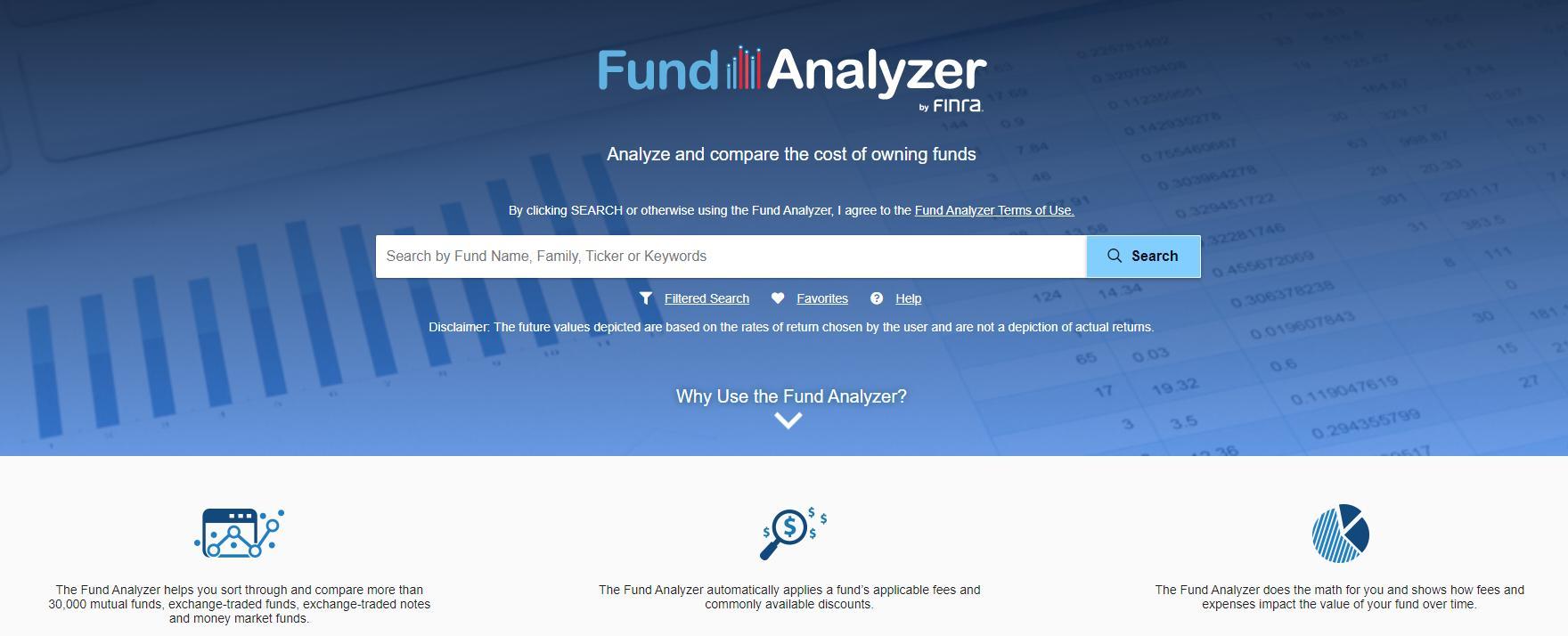
The first results screen allows us to enter the initial amount (whose default is $10,000), the annual return (whose default is 5%, so we need to change that to 8%), and the investment horizon (whose default is ten years).
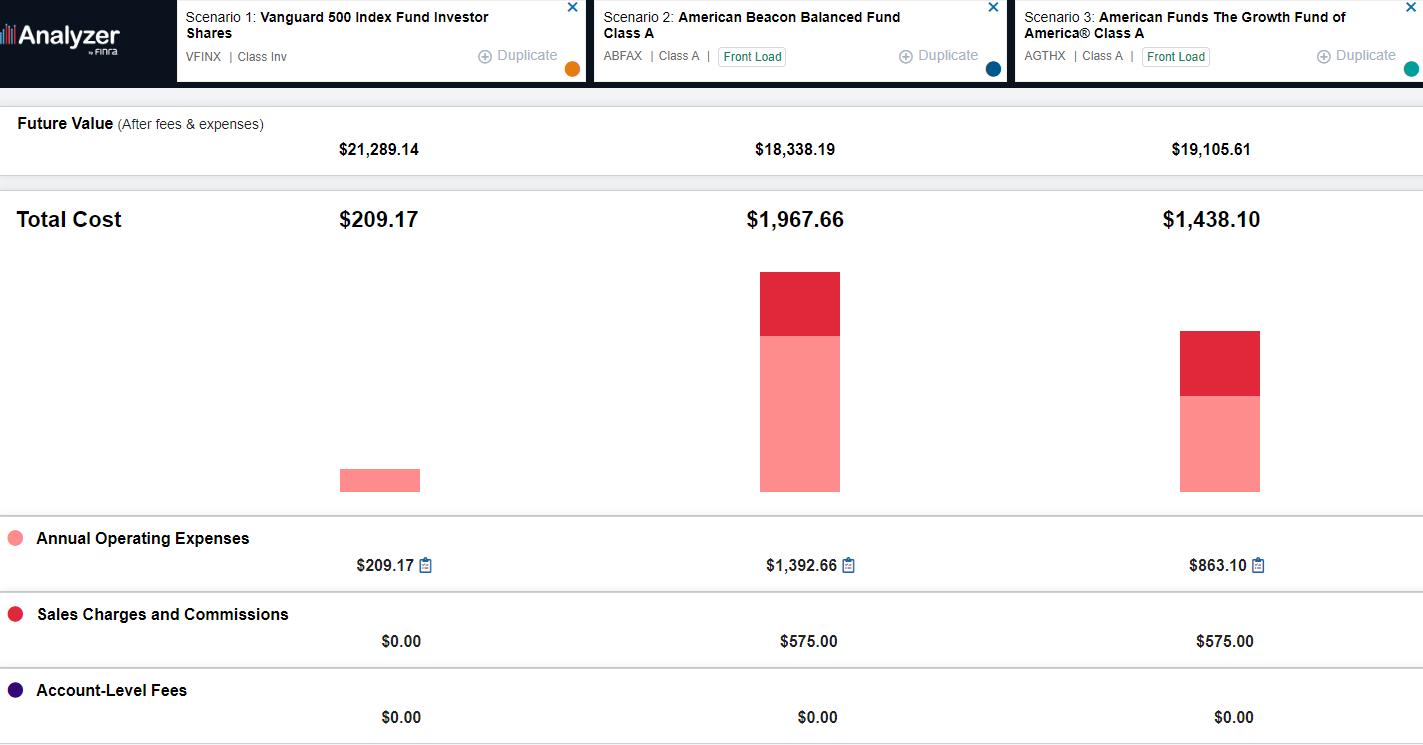
We can see from the results page that the Vanguard fund, which costs us $209 17, leaves us with a profit of $11,289.14. This beats the American Beacon fund (which costs us $1,967 66, with profit of $8,338.19) and the American Growth fund (cost = $1,438 10; profit = $9,105.61). We can also see Vanguard’s domination in the chart below, where the
Copyright © 2025 Pearson Education, Inc.
orange line, representing the value in the Vanguard fund, outpaces the green and blue lines.
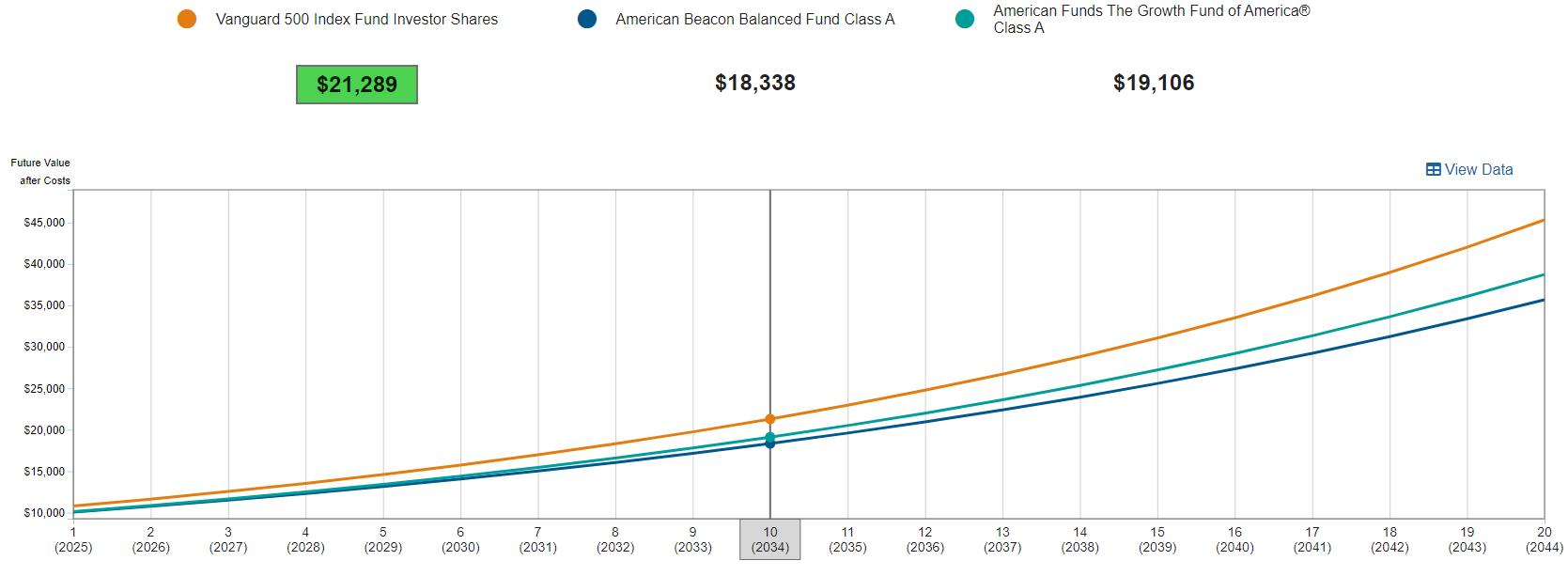
The rest of the page includes the average annual return over periods of 1, 3, 5, and 10 years and since inception along with other general information. It demonstrates that Vanguard and the Growth Fund of America provide similar pure returns over the periods. The main driver of the difference in gains for the investor comes down to fund expenses. The next picture describes the funds’ fee structures and defines their asset-class mandate using the standard Morningstar 9-box style/size taxonomy


Copyright © 2025 Pearson Education, Inc.
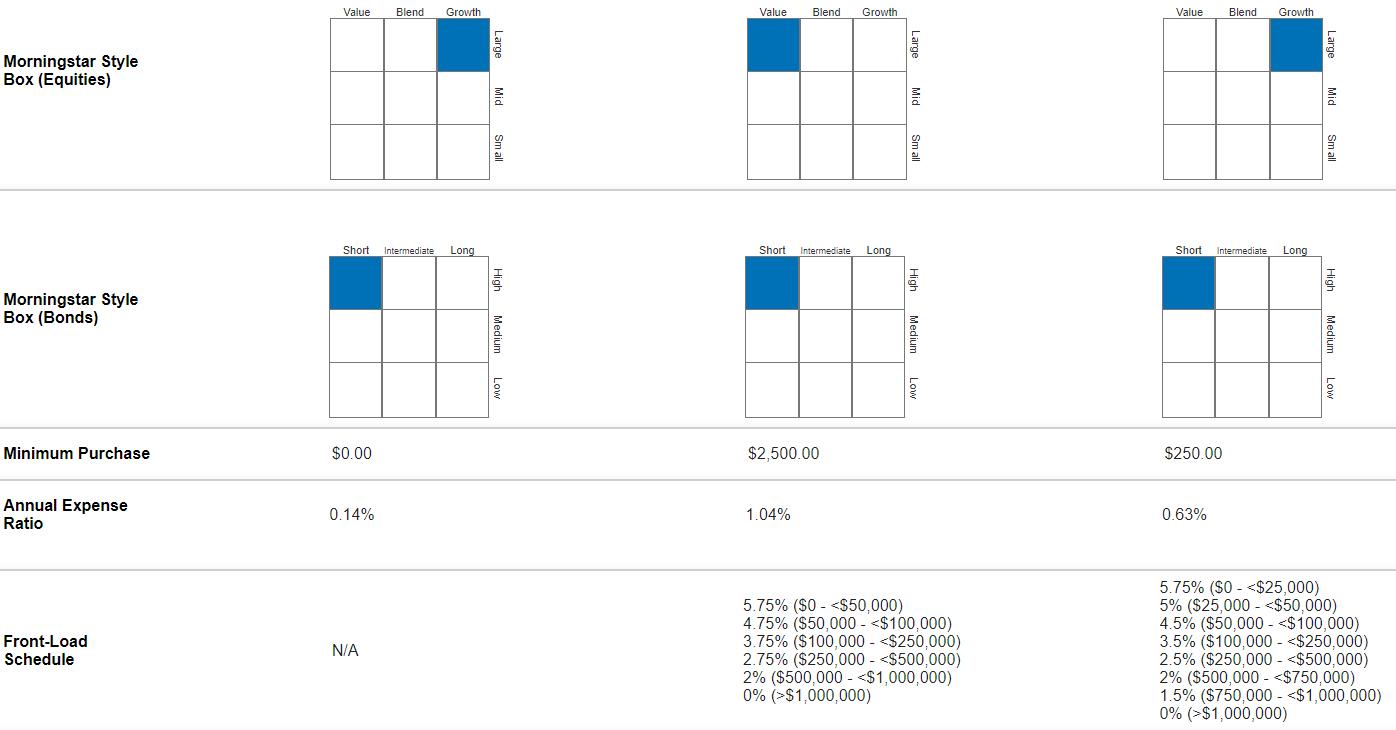

2-10. According to the data presented in the “Finance in a Flat World” box, beginning in the 1980s and through the 1990s, deregulation in the foreign exchange and capital markets in many large financial hubs across the globe opened those markets to international investors. In addition,many largecorporations alsobeganissuingtheirstocks on foreign exchanges which givesinvestorsin thosemarkets access topurchasethestock ofinternational companies
2-11. A hedge fund is a pool of assets, like a mutual fund. However, hedge funds are much less regulated than are mutual funds, which allows hedge fund managers to use many strategies forbidden to mutual fund managers. For example, hedge fund managers often employ significant leverage, invest in illiquid assets (and restrict investors’ ability to access their funds, sometimes for years), and utilize short strategies and derivatives. Hedge funds are not open to all investors; they are targeted at wealthy, sophisticated, “accredited” investors (whom the SEC deems able to take care of themselves). The fee structures of hedge funds are also different from mutual funds’, often involving both an annual fee of 2% of assets,
Copyright © 2025 Pearson Education, Inc.
2-10 Titman/Keown/Martin • Financial Management, Thirteenth Edition
plus 20% of profits (a “2-and-20” scheme).
2-12. The two types of private equity funds discussed in the text are venture capital (VC) funds and leveraged buyout (LBO) funds. VC funds collect money from investors, then use it to finance start-up businesses. Thus, these funds invest very early in a business’s life, perhaps funding research and/or product development. (For example, VCs are very important in the funding of drug R&D.) LBO firms target underperforming businesses, using leverage (debt) to finance the buyout of the firm’s public shareholders taking the firm private The idea is to restructure the business without the distraction of public oversight, then take the firm public again. Investors in private equity make money when their incubated firms are bought out or have their IPO (VC funds), or when the firms are taken public again (LBO funds).
2-13. According to Yahoo! Finance (http://finance yahoo.com/q?s=goog, accessed 2/6/17), we have the following results for Alphabet:
price of last trade:
$80.334 last trade time: 4:00 PDT length of time since last trade: (trade was at close; data accessed after close) day’s price range: $795.25–$801.66 closing change in dollars: down $0.15 closing change in percent: down 0.02% 52-week price range: $663.06–$841.95
Here’s what the screen looked like:
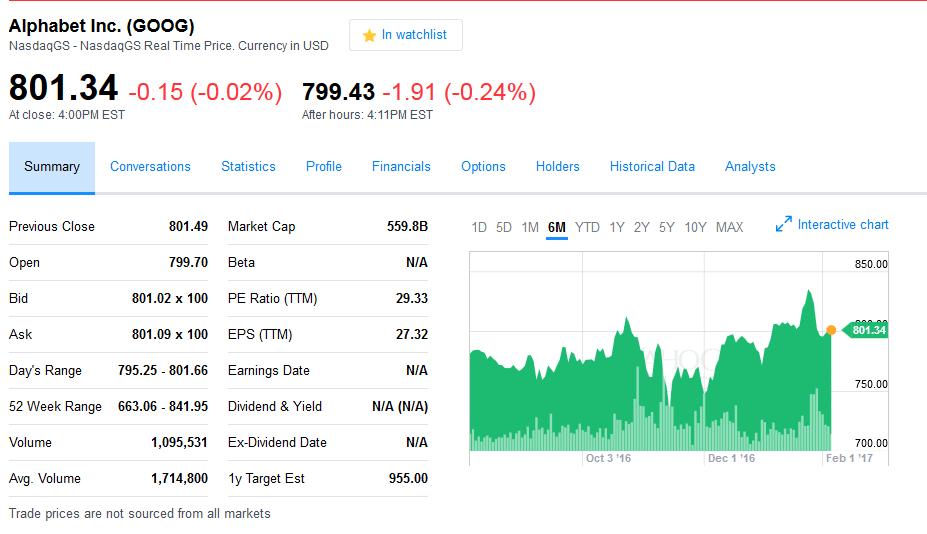
At the top of the page, there are numerous links to more data about Alphabet:
Copyright © 2025 Pearson Education, Inc.
2-11
Summary: summary, real-time, options, historical prices
Statistics: profile, key statistics, SEC filings, competitors, industry, components
Profile: key executives
Financials: income statement, balance sheet, cash flow
Holders: major holders, insider transactions, insider roster:
Historical data: interactive, basic charts, basic technical analysis
Analyst: analyst opinion, analyst estimates, research, star analysis
2-14. The Market Watch website has many interesting personal finance articles, and a student should have no trouble finding at least one that will interest her On 5/26/10, there was an “Ask the Expert” article titled “Dirty Tricks Financial Advisors Play,” written by Walter Updegrave He was responding to a question regarding the efficacy of a strategy of using an interest-only mortgage to buy a house, then combining the payment savings from that loan (versus a fixed-rate mortgage), plus the proceeds of a home equity line of credit, to invest in an equity-indexed universal life insurance policy. The author does not like this strategy, for these reasons:
♦ there is a cap on the earnings that are possible from the policy, despite its link to equity index returns
♦ borrowing from such policies, while tax-free as long as the policy is in force, leads to taxable earnings if the policy lapses (which can be inconvenient if the policyholder is close to retirement)
♦ the strategy is very risky
♦ the advisor may be motivated by his own desire for commissions
The author suggests to sticking with tax-advantaged retirement plans such as 401(k)s, and with traditional investments for deployment of any funds remaining after these retirement vehicles are maxed out.
2-15. The Motley Fool retirement site has sections for “13 Retirement Steps,” IRAs, “401(k)s etc.,” and asset allocation. The main page has a selection of relevant articles (e.g., “How to Salvage Your Retirement Plan Now”), retirement calculators (e g., “Should I Convert My IRA to a Roth IRA?”), and some related links (e.g., “Discuss: Retirement Investing”). The IRA page has discussions about the basics of IRAs, the differences between Roth and traditional IRAs, and the best way to open an IRA (“follow these three simple steps!”). Their thirteen retirement steps are these:
1. change your life with one calculation
2. trade wisdom for foolishness
3. treat every dollar as an investment
4. open and fund your accounts
5. avoid the biggest mistake investors make
6. discover great businesses
7. buy your first stock
8. cover your assets
9. invest like the masters
Copyright © 2025 Pearson Education, Inc.
10. don’t sell too soon
11. retire in style
12. pay it forward
13. make friends and influence fools
Students should enjoy reading the details of these accessibly named topics.
Copyright © 2025 Pearson Education, Inc.
